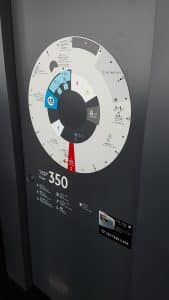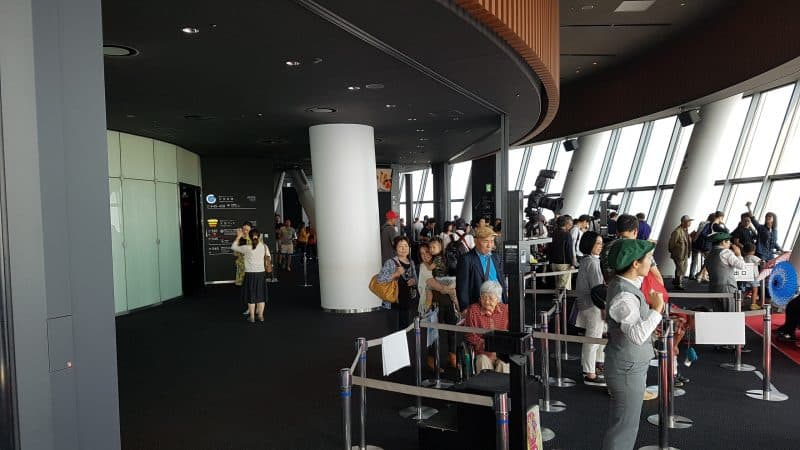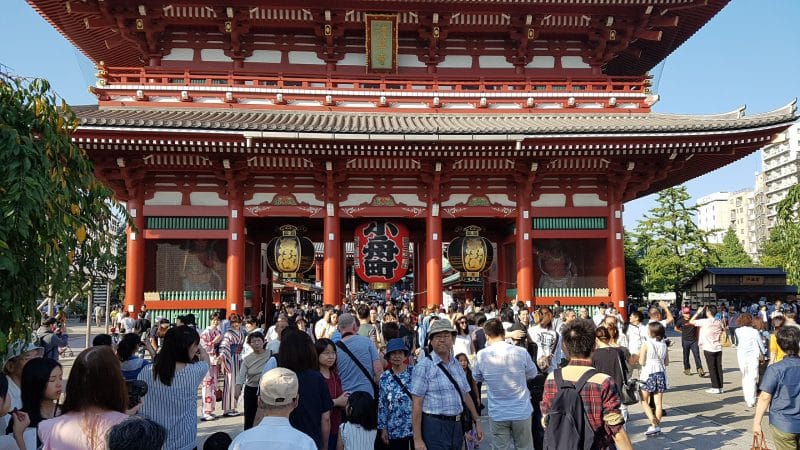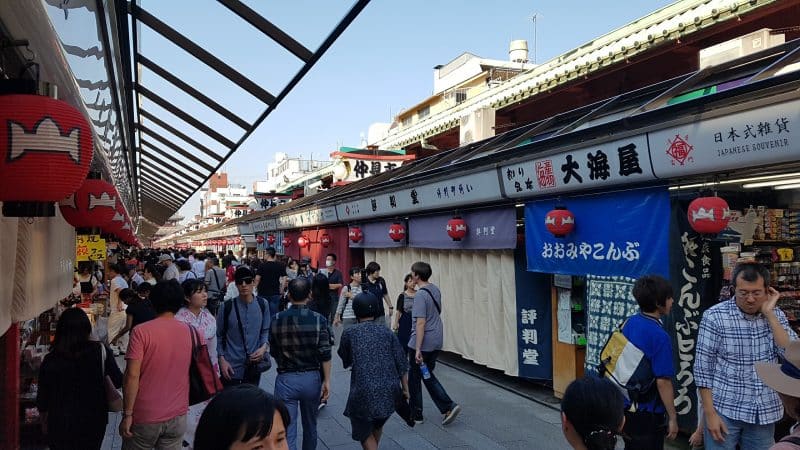Previously on our second day, we went to Sunshine City due to the weather not being too friendly. We visited the Pokemon Center, and Sunshine Aquarium (but we missed out on the planetarium). On our third day, we went to Asakusa and the famous Tokyo landmark, Skytree.
The Tokyo Skytree Tower
Tokyo Skytree is one of the most famous landmark in Tokyo. It started construction in 2008, and was fully completed in 2012. The tower functions as television and radio broadcast, but there are also viewing decks and restaurant for visitors. If you see the tower from a distance at night, depending on the season or day, you may see different light patterns on the tower.
Tokyo Skytree is located next to the adjacent Tokyo Skytree station, accessible through the Tobu Skytree line, an extension line to Skytree from the Asakusa station. Alternatively there is Oshiage station that is also accessible through the Tokyo Metro Hanzomon line.
Unfortunately these stations are not under JR, and as such, not covered on your JR Pass. There are also Skytree shuttle bus services from some other stations. For more information, consult the official Skytree website.
We went to the tower through the Tobu Skytree line, and the station is connected directly to Tokyo Skytree Town, a shopping mall that is directly next to Skytree tower. There are few restaurants and also souvenirs, such as Tokyo Banana store in the mall, so you don’t have to go searching the whole Tokyo for it. We bought some before proceeding to go to the tower.
The tower itself is 634m in height, and there is a special elevator that will get you to the 350th floor, around 350m above the ground. There is also another elevator that will get you to 450th floor, 450m above the ground for an additional cost of around ¥1,000, purchasable either as a combo at the ticketing counter, or on the 350th floor.

Map of the Tembo Deck, located at 350th floor
As we were going to the tower on a Sunday, there were heaps lot of people queueing to get in. Unfortunately there are no special access for people with kids or prams, we had to queue with other people as well. It took around 40-60 minutes before we finally got to the ticketing counter.
Make sure you bring your passport to Skytree. If you do and you choose to use it, you may be able to fast-track and skip the queue. It does cost around ¥1,000 more per person, but if you don’t want to wait, it’s a good option. Unfortunately since we brought my wife’s friend, who is Japanese, we weren’t able to skip the queue (as obviously she’s not an international visitor).
Kids under 4 years-old are free to enter.
The tower has an elevator that took us from the 4th floor to the 350th floor, called the Tembo Deck, in less than a minute. It was quite impressive, if not a little bit unreal. From the viewing deck in 350th floor, you can see the cityscapes of Tokyo. There is also a spot where you can have your photos taken officially. When we were there, it was the Halloween week, so there were a lot of Halloween decorations and whatnot.

There are several photographers to take your photo, so you don’t have to queue long
As with anything in Japan, the viewing deck is equipped with modern tech items. Different areas of the viewing deck will have different paraphernalia to play with. One of the coolest ones is the huge informational navigation kiosk, where it highlights some of the landmarks, and you can actually switch between day/night.
After going to the tower, we went to the shopping mall downstairs. There is another Pokemon Center here, and lots of shops. We had lunch in one of the restaurants, trying out actual gyutan (grilled beef tongue) which is much thicker and surprisingly a lot softer than the ones in Melbourne, and a lot cheaper!
A lot of Japanese proper restaurant offers kids menu. It usually comes with fancy kids utensils with anime characters such as Anpanman, and a choice of drink. It is cheaper, and your kids will get a lot more in their meal. For example, ours came with a side dish and a pudding, for less than an average adult meal price.
This only applies to proper restaurants though, most franchise or cheap eateries such as Yoshinoya or Tendon Tenya may not offer them.
Heading Off to Asakusa
After the satisfying lunch, we went to Asakusa, home of the famous Sensoji temple and the Kaminarimon gate. Asakusa is actually not too far off from Tokyo Skytree, with just one train ride from either station. The Sensoji temple complex is about 3 minutes walk from the Asakusa station north exit.
You can reach Asakusa station from Tokyo Skytree station by train on the Tobu Skytree line, or from Oshiage station on the Asakusa line. You can also walk around 2km to Sensoji, if you so wish. Alternatively, Asakusa station can be reached by using the Tokyo Metro Ginza line from central Tokyo.
As the Tobu Skytree, Asakusa, and Tokyo Metro Ginza lines are not run by JR, it is not covered by JR Pass.
Note that there is another station called Asakusabashi. Although part of the JR network, and covered by JR Pass, Asakusabashi is NOT the station to get off to, as you will need to walk another 2.5km to get to the Sensoji temple complex.
Walking to the Sensoji temple complex, you will be greeted by the iconic Kaminarimon gate, with its huge lantern (called chouchin) at the entrance. Kaminari-mon translates to thunder gate, and aptly, in both sides of the gate you can see the Fuujin (the god of wind) and Raijin (the god of thunder). There is another similar gate on the inner side leading up to the temple, called the Hozo-mon gate, literally translates to gate of the treasure house (because supposedly the second floor of the gate houses treasures).

Hozomon gate, the inner gate leading to Senso-ji temple
In between the gates, lies Nakamise-dori, a street filled with shops and many snack stalls approaching the temple. It’s approximately 250m in length, and shops are mostly focused on traditional Japanese snacks, such as taiyaki (that is, red-bean filled pastry), or items. We got our son a small jinbei, a two-piece Japanese clothing that resembles yukata or kimono.
Note that in Japan, it is considered impolite and rude to eat while you are walking. If you are buying something to eat straightaway, please consume it near the stall. This also applies to convenience stores. If you’re buying something to eat on-the-go, please consume it either in the store (some convenience stores have eating areas), or just outside the store.
This is one of the reasons why the garbage disposal bins are located outside or near the stores, and almost non-existent on pedestrian walkways.

Nakamise-dori shopping street
After eating lots of snack and strolling around the temple complex, we finally said goodbye to my wife’s friend, and went back to our apartment.
And that wraps up our third day in Tokyo! The next day we will be going outside Tokyo to Yokohama.
